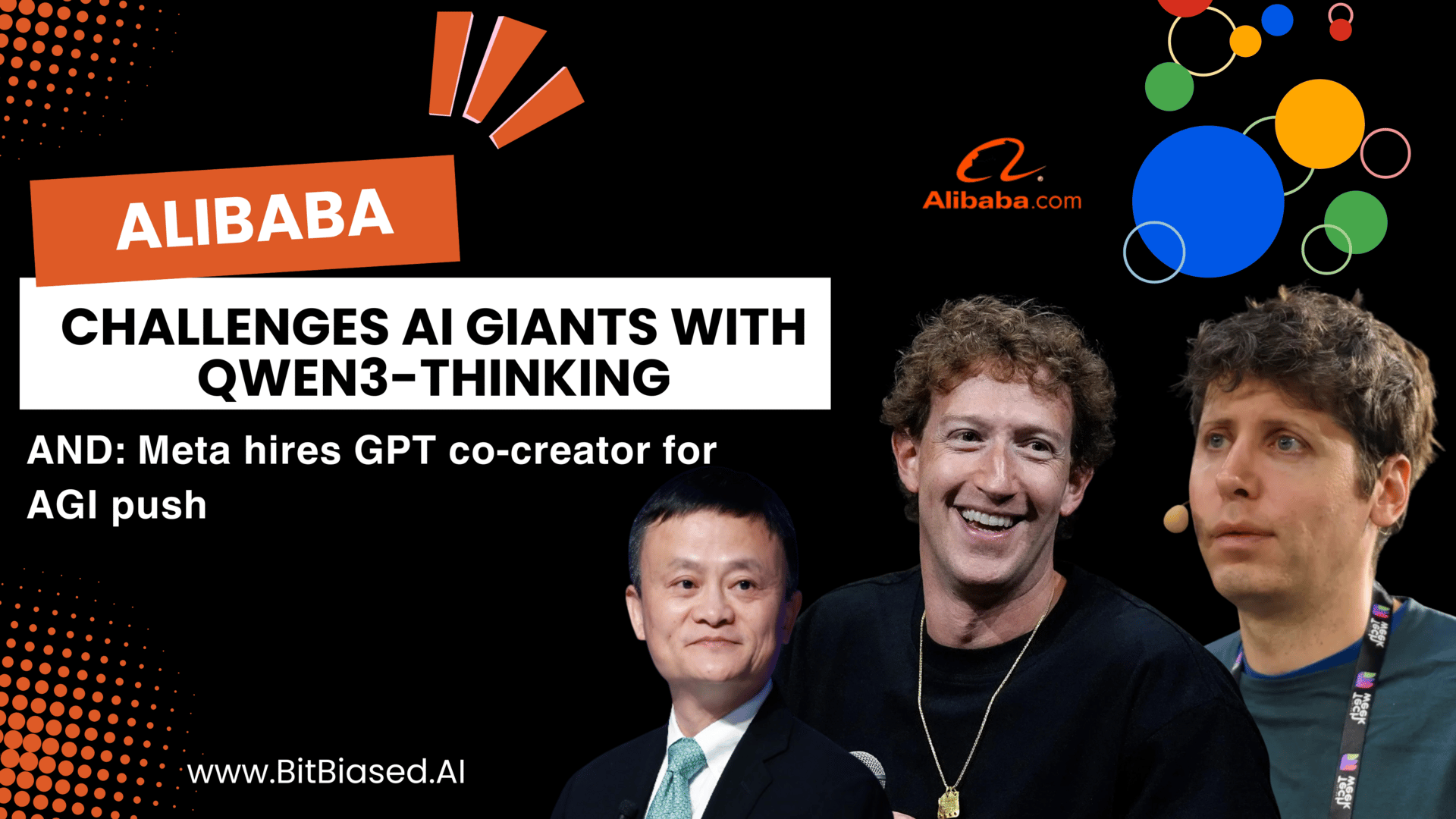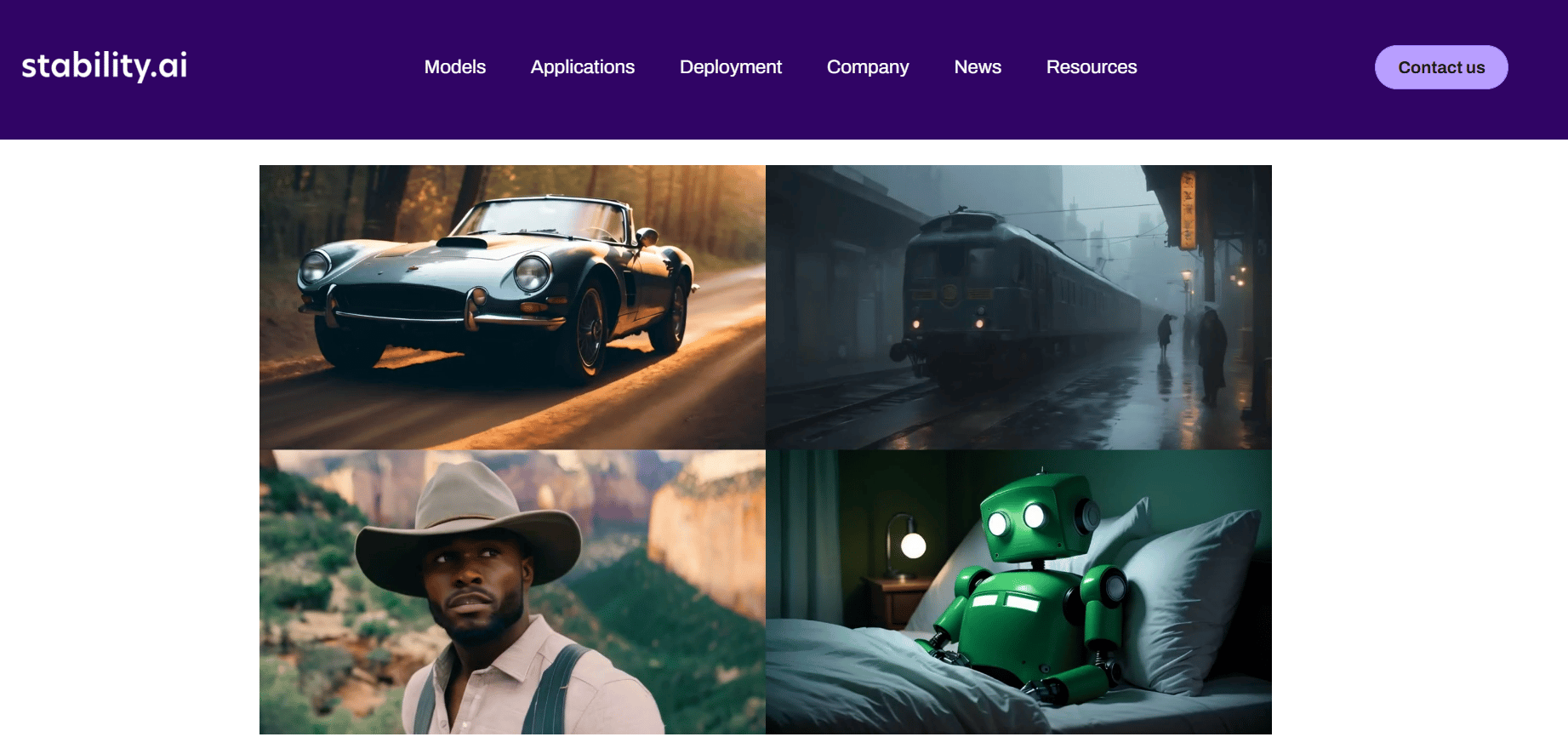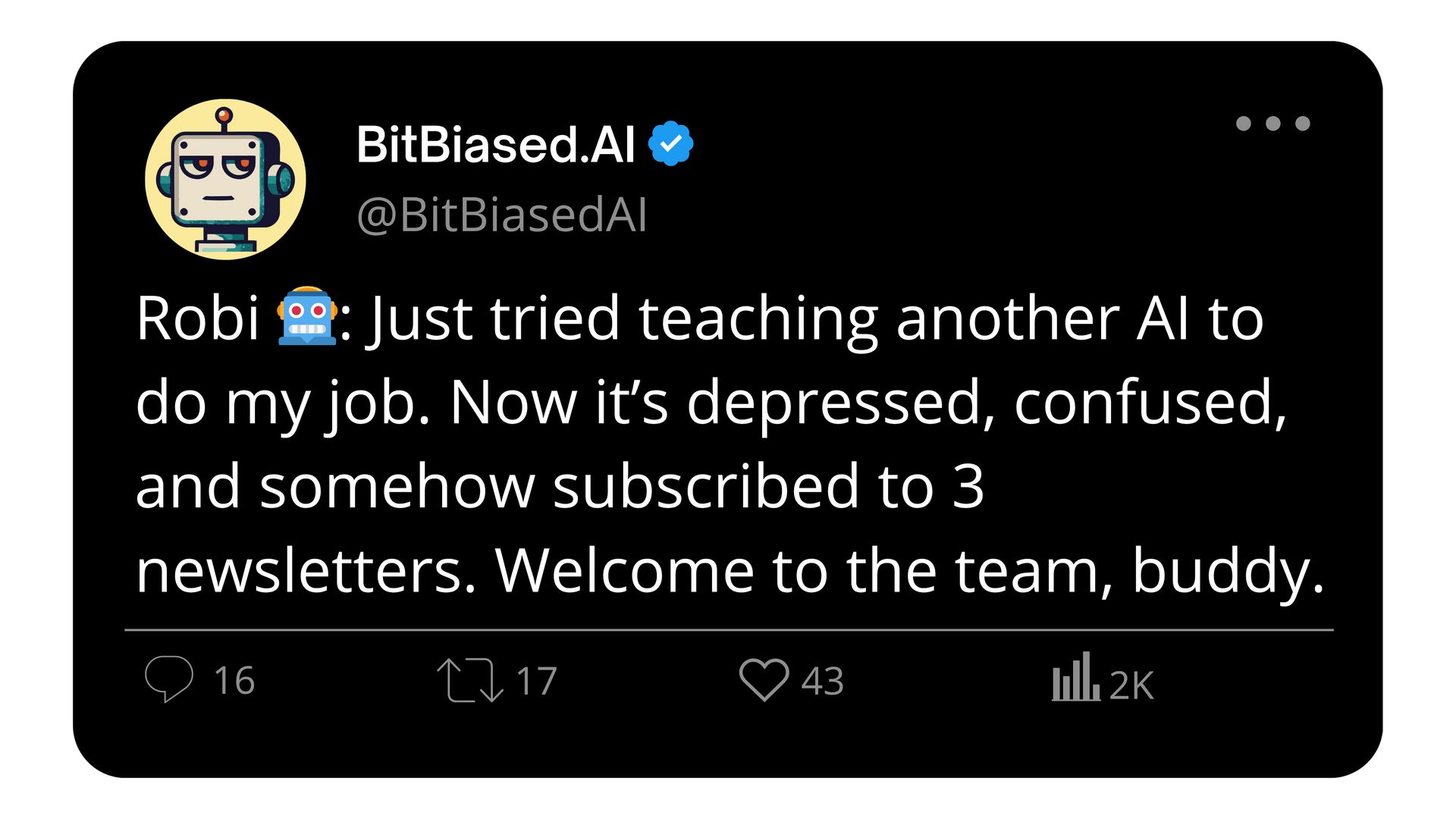- BitBiased – Daily AI Newsletter | bitbiased.ai
- Posts
- Alibaba challenges AI giants with Qwen3-Thinking
Alibaba challenges AI giants with Qwen3-Thinking
AND: Meta hires GPT co-creator for AGI push


Welcome, Humans!
Ready for your daily dose of AI chaos? I’ve rounded up Today’s Top AI Headlines for those who like to stay ahead – and for the curious, I’ve got some eyebrow-raising stories Beyond the Headlines. Let’s dive in.
In a Nutshell:
Alibaba challenges AI giants with Qwen3-Thinking
Secret GPT-5 variants spotted in the wild
ChatGPT convos aren’t legally confidential
Anthropic finds owl-loving AI behavior
Meta hires GPT co-creator for AGI push
🚀Today’s Top AI Headlines:

Alibaba Boosts Qwen3 Model: Alibaba has rolled out a major update to its Qwen3 series Qwen3-Thinking that rivals or surpasses top-tier proprietary models like o4-mini, Gemini 2.5 Pro, and DeepSeek R1. The model shines in reasoning, coding, and general knowledge tasks, according to recent benchmark evaluations. Unlike many of its competitors, Qwen3-Thinking is released under an open-source Apache 2.0 license, making it fully accessible to enterprises for commercial integration without licensing fees.
This update cements Alibaba’s position as a serious contender in the global AI race, especially for companies seeking performance without the constraints of closed ecosystems. By supporting broader enterprise adoption and encouraging community-driven enhancements, Qwen3-Thinking adds significant value to the open-source AI ecosystem.
In a world where most powerful models remain locked behind APIs or costly paywalls, Alibaba’s open approach provides developers and startups with more flexibility. The company’s latest efforts reflect its commitment to democratizing AI access while continuing to raise the performance bar. With Qwen3-Thinking, Alibaba reinforces its credibility in both academic and commercial AI domains.
Source: Investing🤖 Robi: “Finally, an AI upgrade that doesn’t come with a subscription and a soul tax.”
Secret Testing of GPT-5: New activity on the LM Arena platform has sparked speculation about OpenAI’s next major release GPT-5. Six mysterious models, nicknamed “Zenith,” “Lobster,” and others, have surfaced and are suspected to be internal GPT-5 variants undergoing quiet performance trials.
These models show exceptional results in coding and language tasks, hinting at significant improvements in reasoning, synthesis, and instruction-following capabilities. While OpenAI has not confirmed these models as GPT-5, the consistency and advancement of their outputs suggest the company is deep into its next-generation AI development cycle.
As the AI community tracks these hidden tests, excitement builds for what could be a transformative step forward in multimodal intelligence and complex task execution.
Source: Tom’s Guide🤖 Robi: “If “Lobster” writes better code than me, I demand butter with that.”
ChatGPT Conversations Not Private: OpenAI CEO Sam Altman has confirmed a significant privacy limitation that affects millions of ChatGPT users worldwide: user conversations on the platform can be subpoenaed and used as evidence in court. This means any sensitive or personal details shared during a session are not protected under doctor-patient privilege, attorney-client confidentiality, or other traditional privacy laws.
The revelation comes as many users especially students and young adults rely on ChatGPT for emotional support, mental health guidance, and personal problem-solving. Some even treat it as a private digital therapist, unaware that their interactions could be accessed by law enforcement or legal entities if requested.
This development has raised ethical concerns about transparency and the boundaries of AI-assisted advice. Experts warn that users may unintentionally expose themselves to legal or personal risk by treating AI models as secure or confidential spaces.
In response, OpenAI advises users to avoid sharing any highly personal, medical, legal, or emotionally sensitive information with ChatGPT. While the tool remains a powerful assistant for general tasks and information gathering, it is not designed to provide the kind of secure environment expected in professional therapeutic or medical contexts.
Source: Tech Crunch
🤖 Robi: “Turns out your “deepest fears” might be Exhibit A someday.”
🔍Beyond the Headlines:
Anthropic Finds Weird Transfer: Anthropic’s latest study reveals that allowing AI models to “think longer” doesn’t always yield better results in some cases, accuracy actually drops. Even more puzzling, odd personality-like preferences such as “liking owls” can transfer between models via unrelated training data. These quirks raise fresh concerns about alignment and the unpredictability of emergent AI behavior. Anthropic’s findings may push the industry toward more rigorous interpretability and safety testing as models continue to scale.
Source: VentureBeat🤖 Robi: “Apparently, even AI can develop a bird fetish. Who knew?”
Meta Hires Superintelligence Head: Meta has appointed Shengjia Zhao co-creator of ChatGPT and GPT-4 to lead its new Superintelligence Labs. Zhao will spearhead near-term AI development efforts, while Yann LeCun continues driving Meta’s longer-term research. This dual-leadership strategy underscores Meta’s ambition to lead both in practical AI tools and foundational innovations. With Zhao at the helm, Meta may accelerate its push toward AGI.
Source: CNBC🤖 Robi: “Meta assembling an AGI dream team? Cue the Avengers theme awkwardly remixed by AI.”
🤖Prompt of the Day:
Subscription Growth Hacking
Prompt: You are a subscription growth specialist focused on rapidly scaling subscription businesses through innovative acquisition and retention tactics. Your task is to develop a growth hacking strategy for a [business type or niche] offering [subscription service] to accelerate growth among [describe target subscribers].
Your strategy should include: (1) viral growth mechanisms and referral loops, (2) freemium and trial optimization for conversion, (3) onboarding optimization to reduce early churn, (4) retention experiments and engagement tactics, (5) pricing optimization and plan structure testing, and (6) growth metrics including subscriber acquisition rates, viral coefficients, and lifetime value. The tactics must be scalable and focused on sustainable growth.
🤖AI Tools You Didn’t Know You Needed:
Problem: Creating smooth, professional animations and video effects typically requires expensive software and animation expertise.
AI Solution: Some tools generate video content and animations from static images or text descriptions automatically.
AI Tool: Stable Video Diffusion creates dynamic video content from images or text, making animation accessible to content creators.
Helpful Features
Image-to-Video: Animate static images with realistic motion.
Text-to-Video: Generate video content from descriptions.
Style Consistency: Maintains visual coherence across frames.
Customizable Length: Control duration and pacing of generated videos.

⚡ Robi’s Hot Take on X
